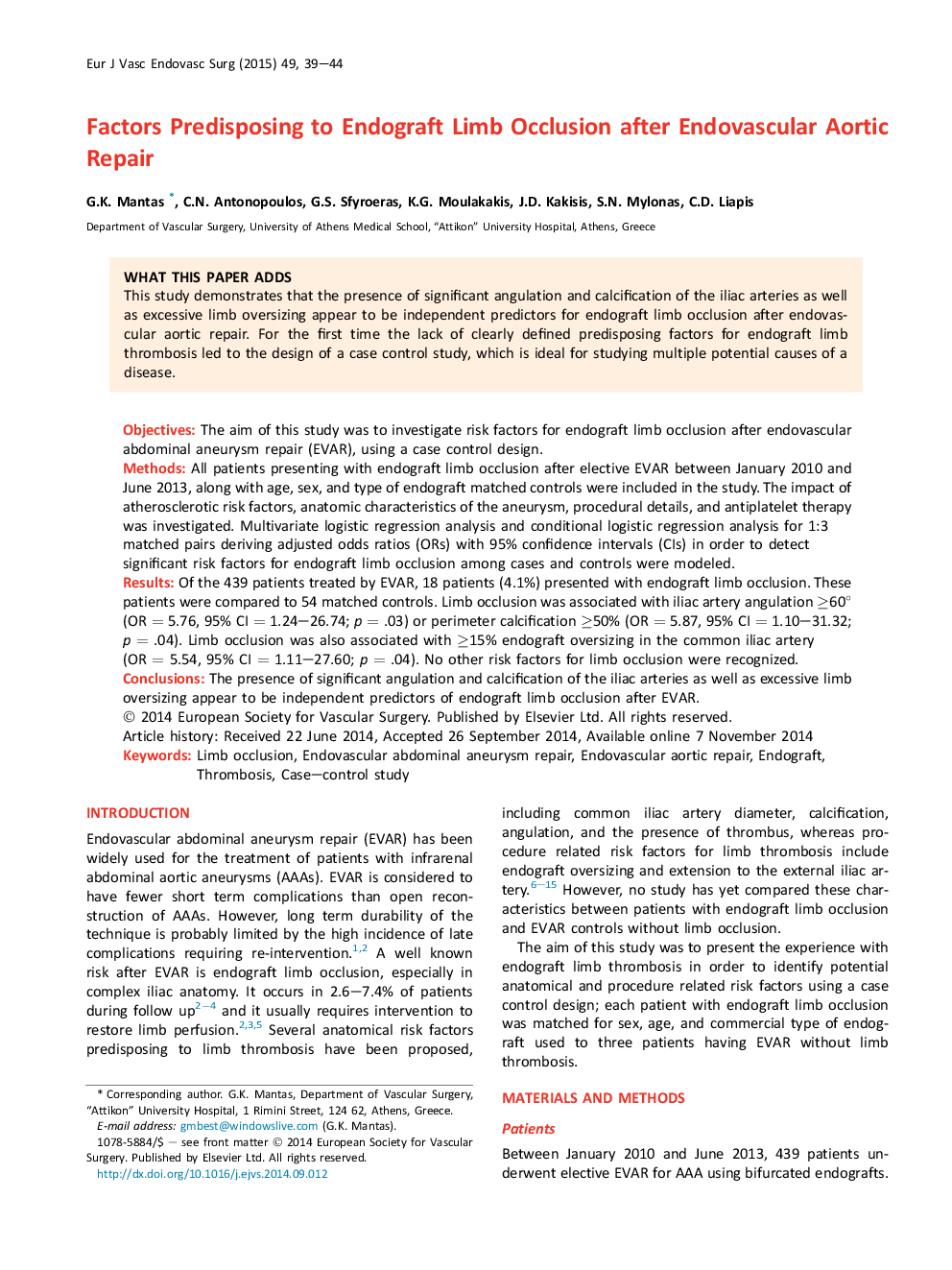| Article ID | Journal | Published Year | Pages | File Type |
|---|---|---|---|---|
| 2911987 | European Journal of Vascular and Endovascular Surgery | 2015 | 6 Pages |
ObjectivesThe aim of this study was to investigate risk factors for endograft limb occlusion after endovascular abdominal aneurysm repair (EVAR), using a case control design.MethodsAll patients presenting with endograft limb occlusion after elective EVAR between January 2010 and June 2013, along with age, sex, and type of endograft matched controls were included in the study. The impact of atherosclerotic risk factors, anatomic characteristics of the aneurysm, procedural details, and antiplatelet therapy was investigated. Multivariate logistic regression analysis and conditional logistic regression analysis for 1:3 matched pairs deriving adjusted odds ratios (ORs) with 95% confidence intervals (CIs) in order to detect significant risk factors for endograft limb occlusion among cases and controls were modeled.ResultsOf the 439 patients treated by EVAR, 18 patients (4.1%) presented with endograft limb occlusion. These patients were compared to 54 matched controls. Limb occlusion was associated with iliac artery angulation ≥60° (OR = 5.76, 95% CI = 1.24–26.74; p = .03) or perimeter calcification ≥50% (OR = 5.87, 95% CI = 1.10–31.32; p = .04). Limb occlusion was also associated with ≥15% endograft oversizing in the common iliac artery (OR = 5.54, 95% CI = 1.11–27.60; p = .04). No other risk factors for limb occlusion were recognized.ConclusionsThe presence of significant angulation and calcification of the iliac arteries as well as excessive limb oversizing appear to be independent predictors of endograft limb occlusion after EVAR.
